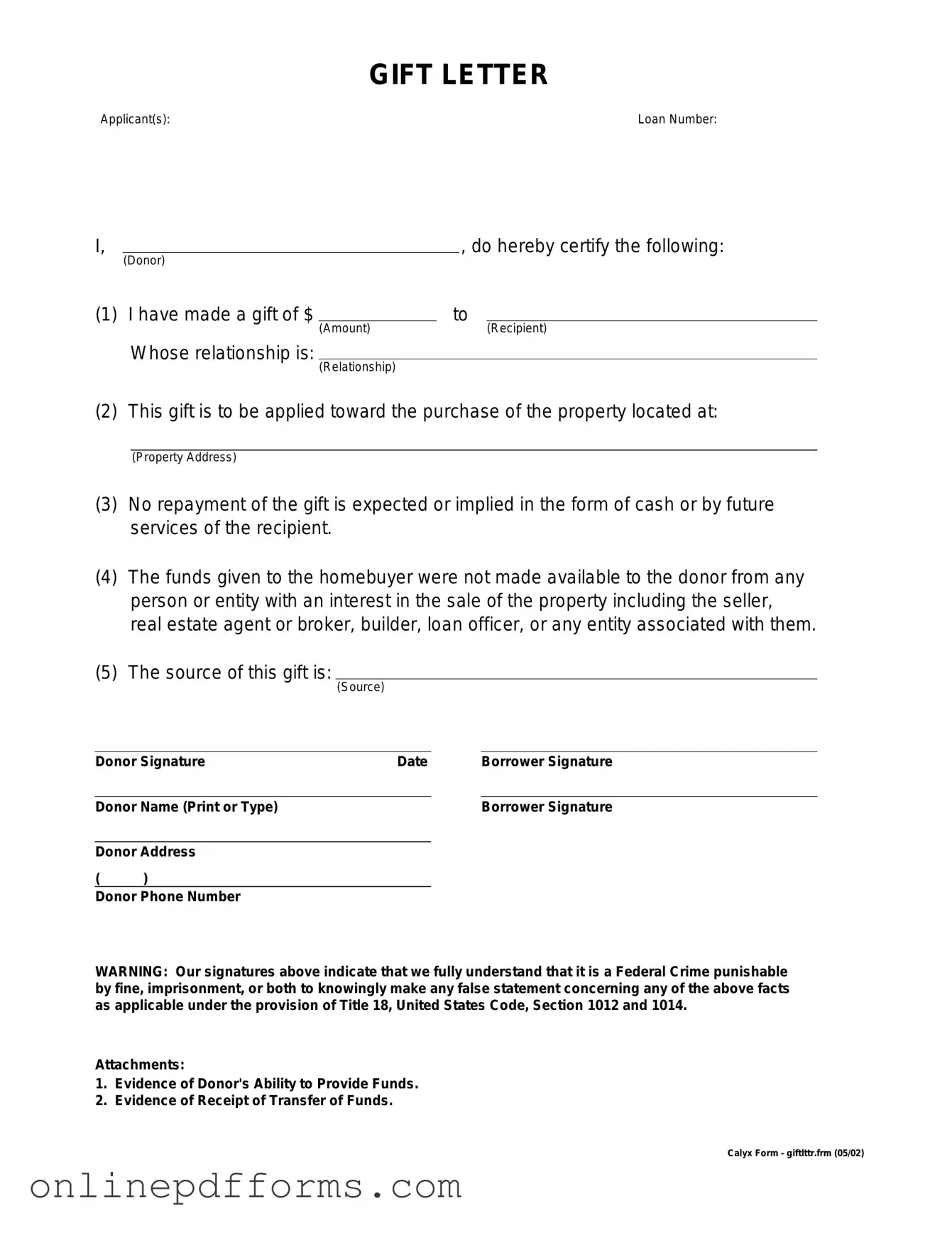A Gift Letter form is often compared to a Loan Gift Agreement. While both documents serve to clarify the nature of financial assistance, a Loan Gift Agreement specifically outlines the terms under which a loan is provided, including repayment expectations. This agreement can help prevent misunderstandings between the giver and the recipient, ensuring that both parties are on the same page regarding the financial arrangement.
Another similar document is the Affidavit of Support. This form is commonly used in immigration cases to demonstrate that an individual has adequate financial support. Like a Gift Letter, it confirms that funds are being provided without expectation of repayment. However, the Affidavit of Support typically requires the sponsor to prove their financial ability to support the immigrant, adding an additional layer of responsibility.
The Financial Gift Declaration is another document that resembles a Gift Letter. This declaration is often used in situations where one party wishes to declare that a transfer of funds is a gift rather than income. Both documents aim to clarify the intent behind the financial transaction, but the Financial Gift Declaration may also include tax implications and other financial disclosures.
A Promissory Note can also be compared to a Gift Letter, though it typically involves a loan rather than a gift. This document outlines the borrower's promise to repay a specific amount of money under agreed-upon terms. While a Gift Letter states that the funds are a gift with no repayment required, a Promissory Note establishes a legal obligation for repayment.
The Contribution Agreement shares similarities with a Gift Letter as well. This document outlines the terms of a financial contribution made by one party to another, often for specific purposes, such as funding a project or business venture. While both documents confirm that funds are being provided, a Contribution Agreement may include stipulations about how the funds can be used, which is not typically addressed in a Gift Letter.
In the realm of vehicle transactions, it is crucial to ensure that all aspects of the sale are clearly documented to avoid any misunderstandings. As with various financial agreements, the use of standardized forms can greatly aid in this process. One such vital document, the Auto Bill of Sale Forms, serves to facilitate the transfer of ownership, providing both the buyer and seller with a clear legal record of the transaction. By utilizing this form, parties can contribute to a seamless transition, equivalent to the clarity offered by a Gift Letter in financial dealings.
Lastly, a Charitable Donation Receipt can be likened to a Gift Letter in that both documents serve to confirm the transfer of funds. However, a Charitable Donation Receipt is specifically used for donations made to non-profit organizations. This receipt provides proof for tax purposes, whereas a Gift Letter is more personal and often used in family or friend transactions without tax implications.
